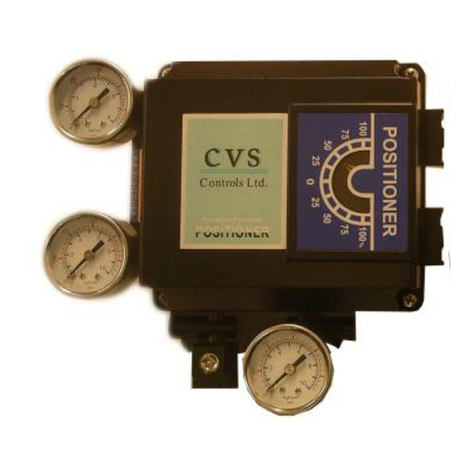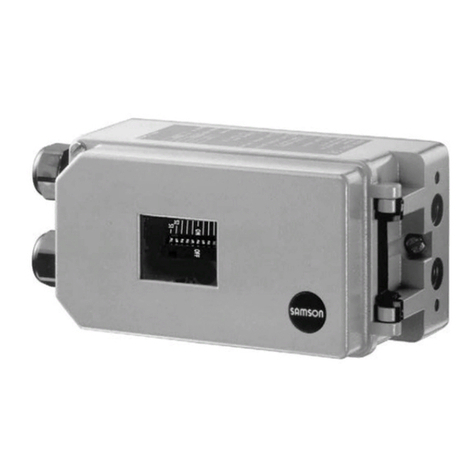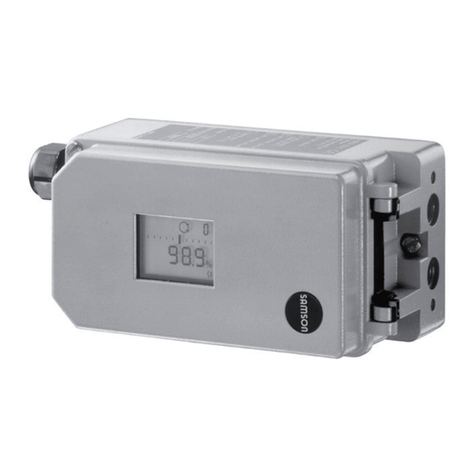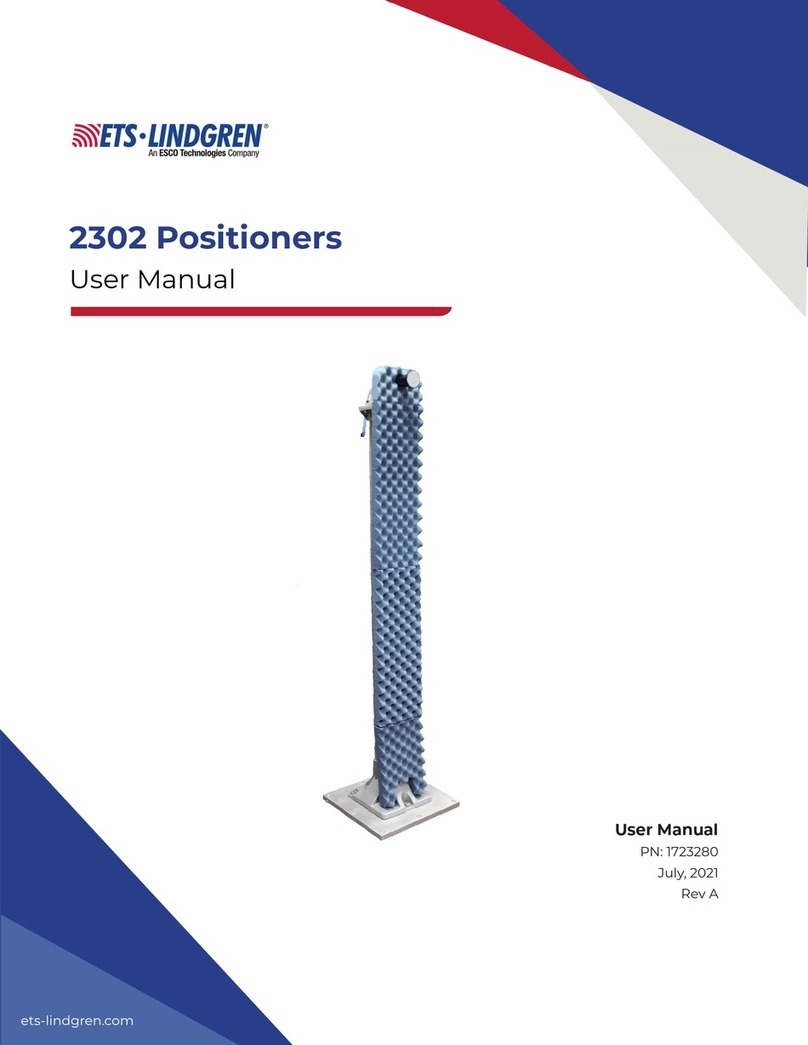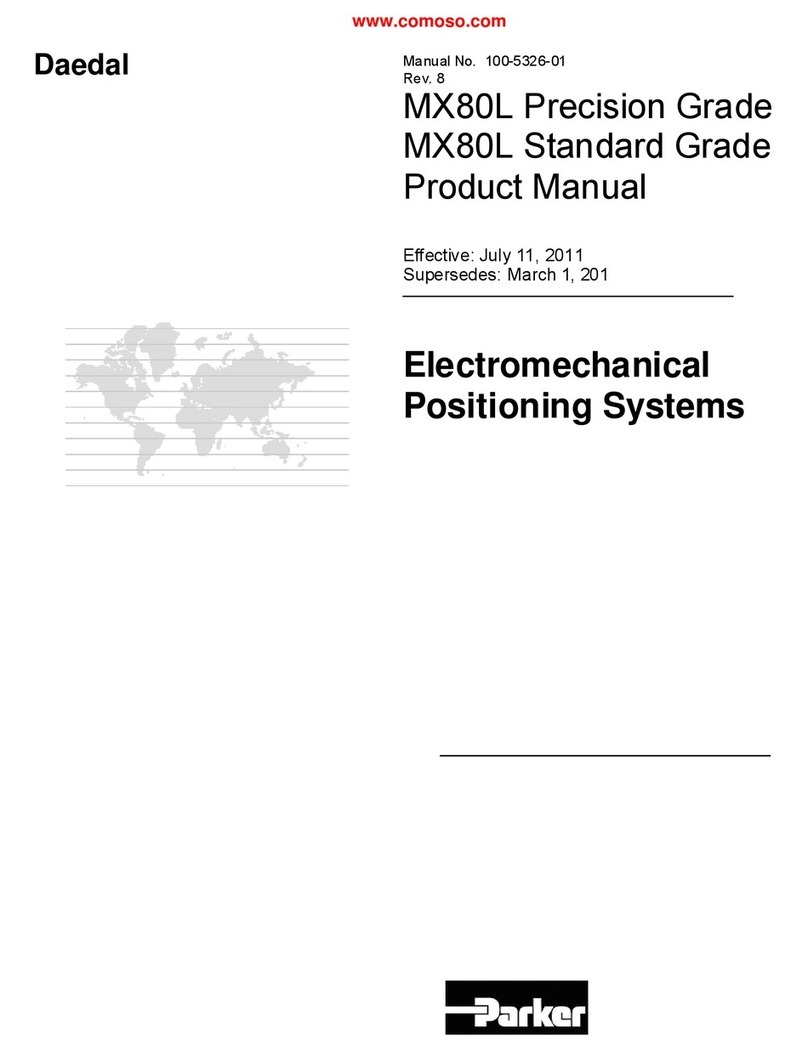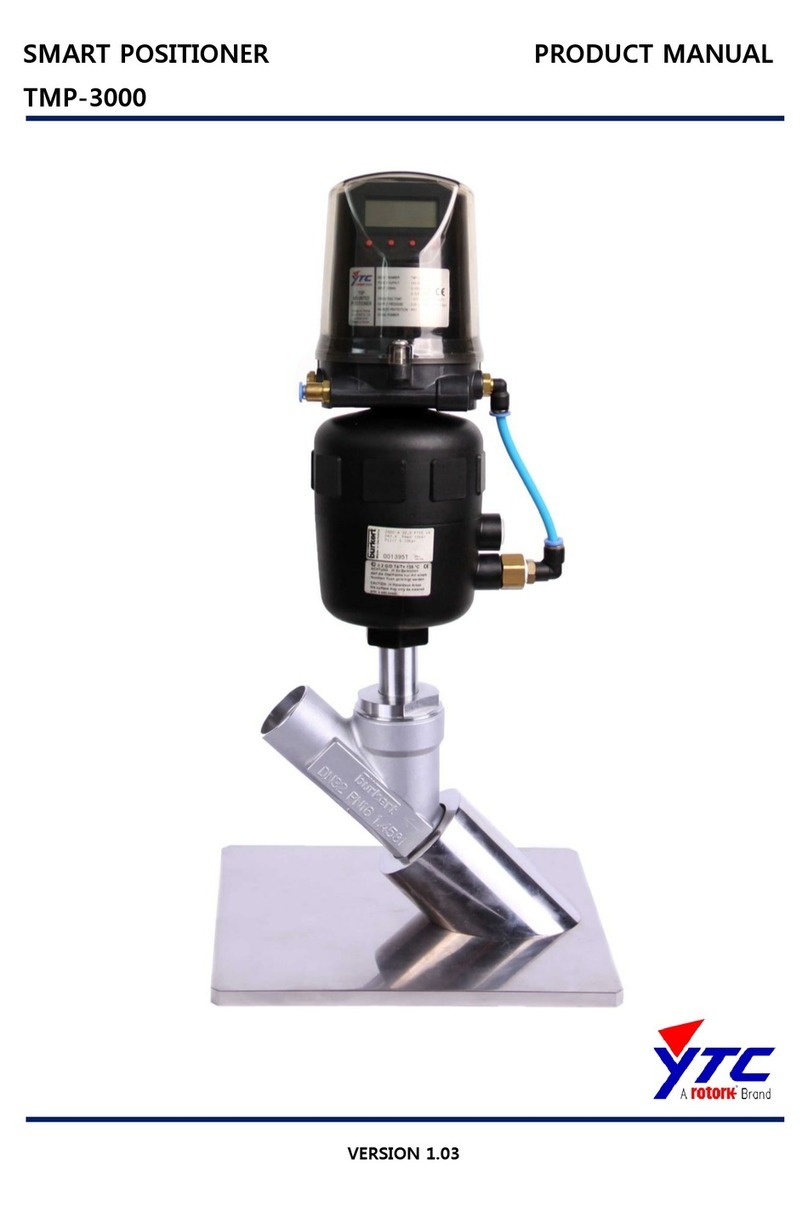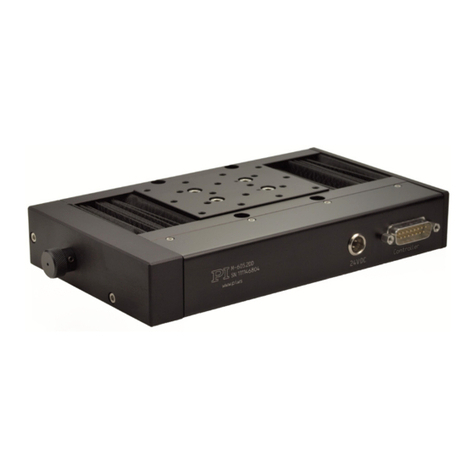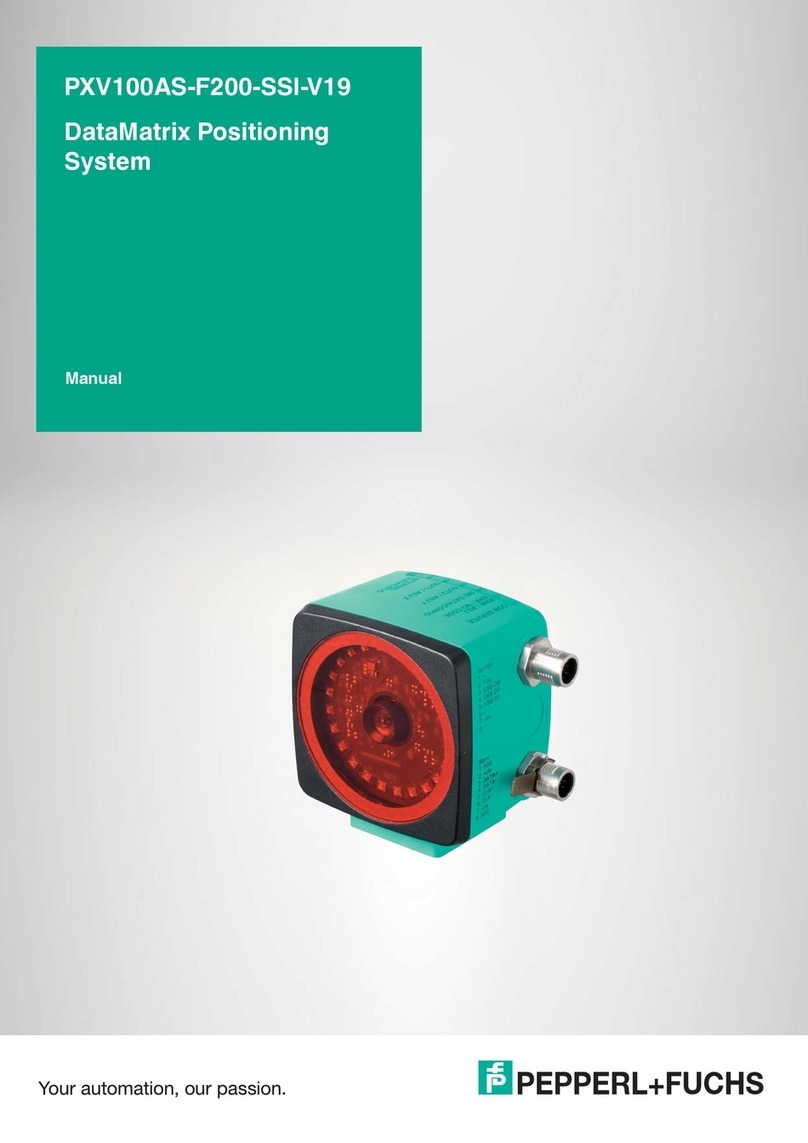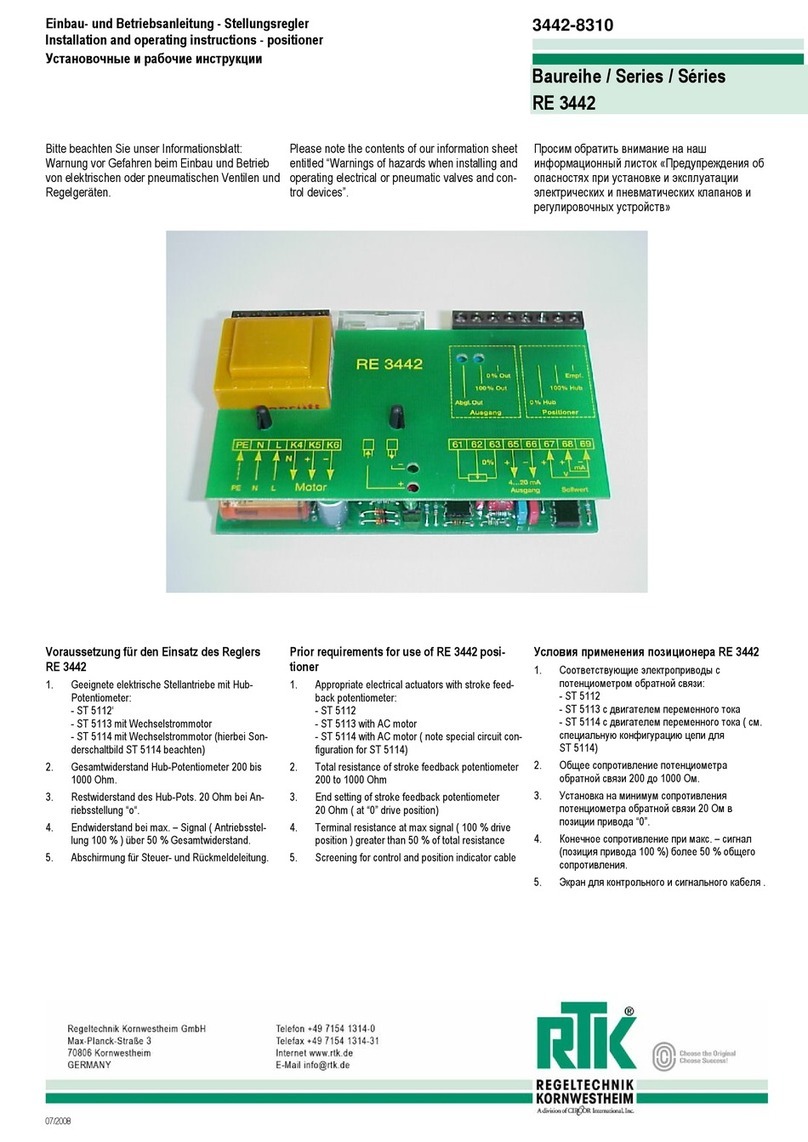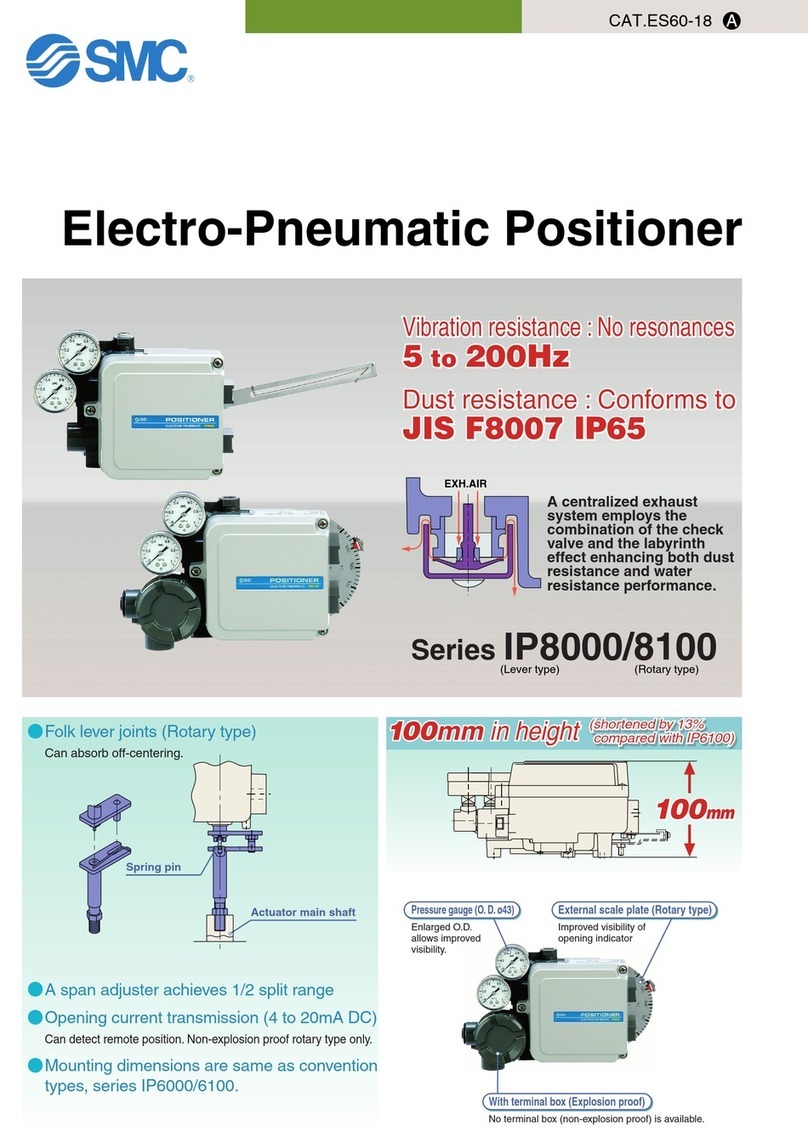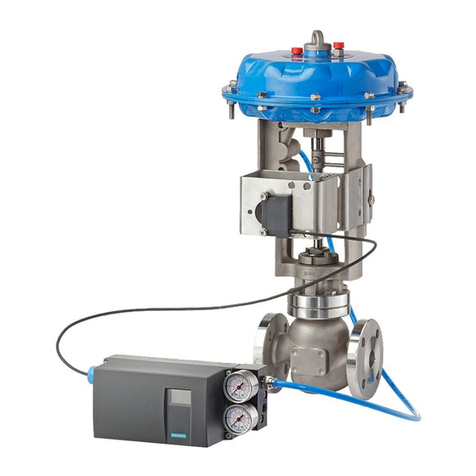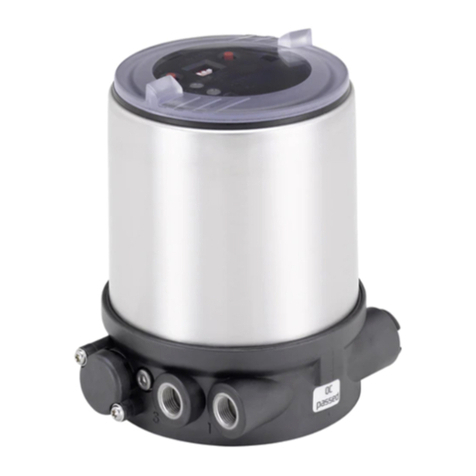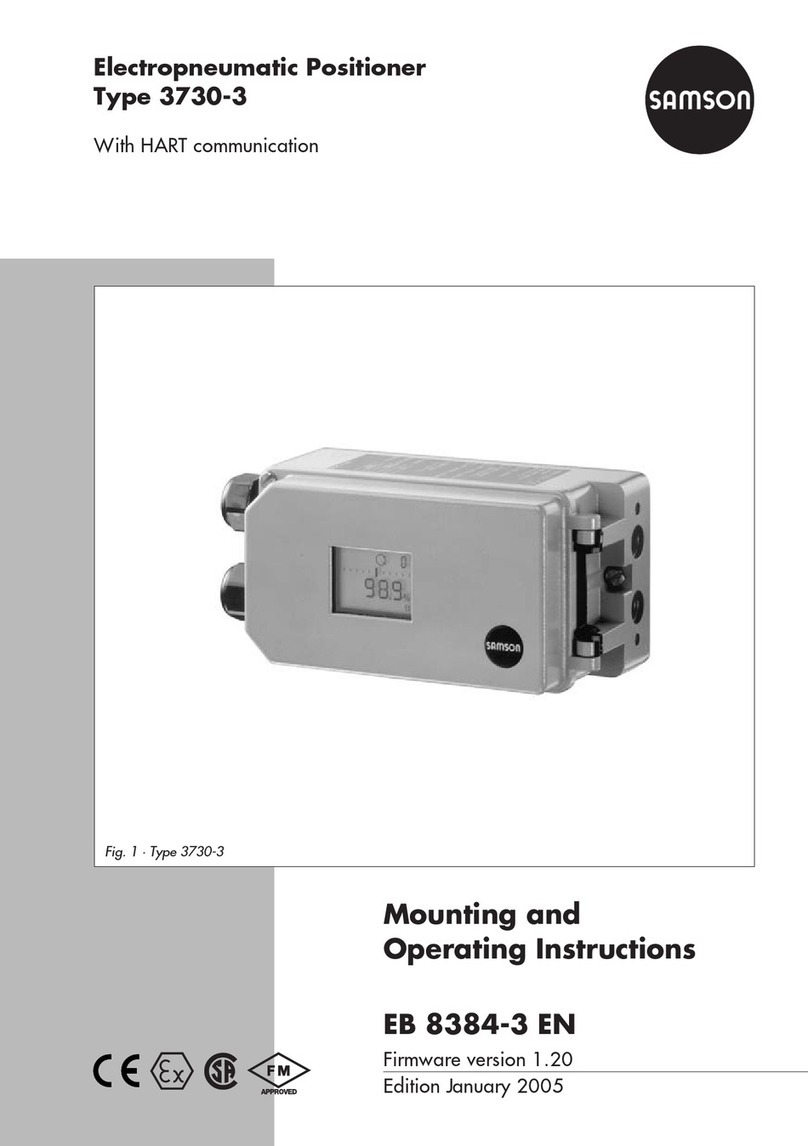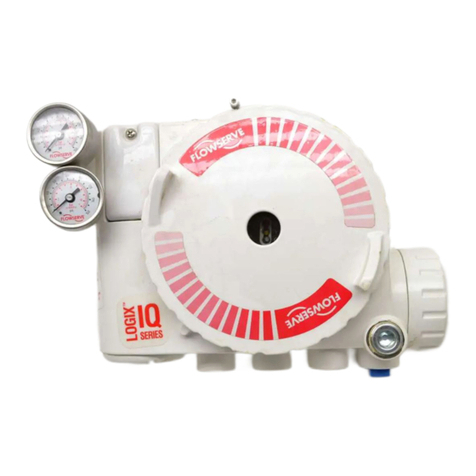
040215
Jomar Valve ・ 7243 Miller Drive, Warren, MI 48092 ・ www.jomarvalve.com ・ phone: (586) 268-1220 ・ fax: (586) 979-8315
Note: Information subject to change without notice.
Maintenance And Check
1. If the supply air is fouled, the positioner may not operate normally. Periodically check the
compressed air cleaning system and make sure that clean air is always supplied.
2. When you disassemble the pilot valve, grease the sliding section of o-ring.
3. When the xed orice is clogged with carbon particles or others, remove the pilot valve Auto/Manual
changeover screw (built-in xed aperture) and clean it by inserting a Ø0.2 wire into the aperture. If it must
be replaced with new one, close the supply pressure and remove the stopper screw of the pilot valve.
4. Check the positioner once a year. When you nd excessively worn diaphragm, O-ring and other
packing of unit, it should be changed with new ones. Treatment at an early stage is especially import
if the positioner is used in a place of severe environment such as coastal areas of the country.
Caution On Handling
1. Do not apply large vibration or impact to the positioner. It causes trouble. The positioner
must be handled very carefully during transportation and operation.
2. If the positioner is used under temperature outside of the specication, the sealing materials
deteriorate quickly and also the positioner may not operate normally.
3. Do not remove the terminal cover at a dangerous position during power conduction.
4. Be sure that the terminal cover and body cover are put on during the operation.
5. If you leave the positioner at the operation site for a long time without using it, put the cover on it so that the rain
water does not enter the positioner. If the atmosphere is of high temperature or high humidity, take measures to
avoid condensation inside. The condensation control measures must be taken thoroughly for export shipment.
Trouble Shooting
Trouble Check if... Solution
Not operational
when input signal
applied
Air supply is too low or blocked Input supply air
Connections are loose Tighten set screw of terminal
Wiring for ⊕ and ⊖ are correct Connect wiring ⊕ and ⊖
Short or open circuit in the terminal motor Replace motor unit
Nozzle is clogged Replace motor unit
Feedback lever is loose or on the wrong setting Correct setting and tighten
OUT1 pressure raises
and stays, and then
doesn’t come down
A/M switch is leaking Tighten or replace A/M switch
Flapper is scratched or wrong contact Replace motor unit
Fixed orice is clogged Clean or replace xed orice
Output pressure is
operated by A/M
switch only
Nozzle is clogged
Clean nozzle or replace motor unit
Hunting occurs O-position stabilizer spring Insert stabilizing spring
Too low of actuator volume Insert orice
Fixed orice is clogged Clean or replace xed orice
Actuator is operated
by On/O only
Wrong connection of OUT1 and OUT2 tubing Correct position of tubing
